Winter 2018
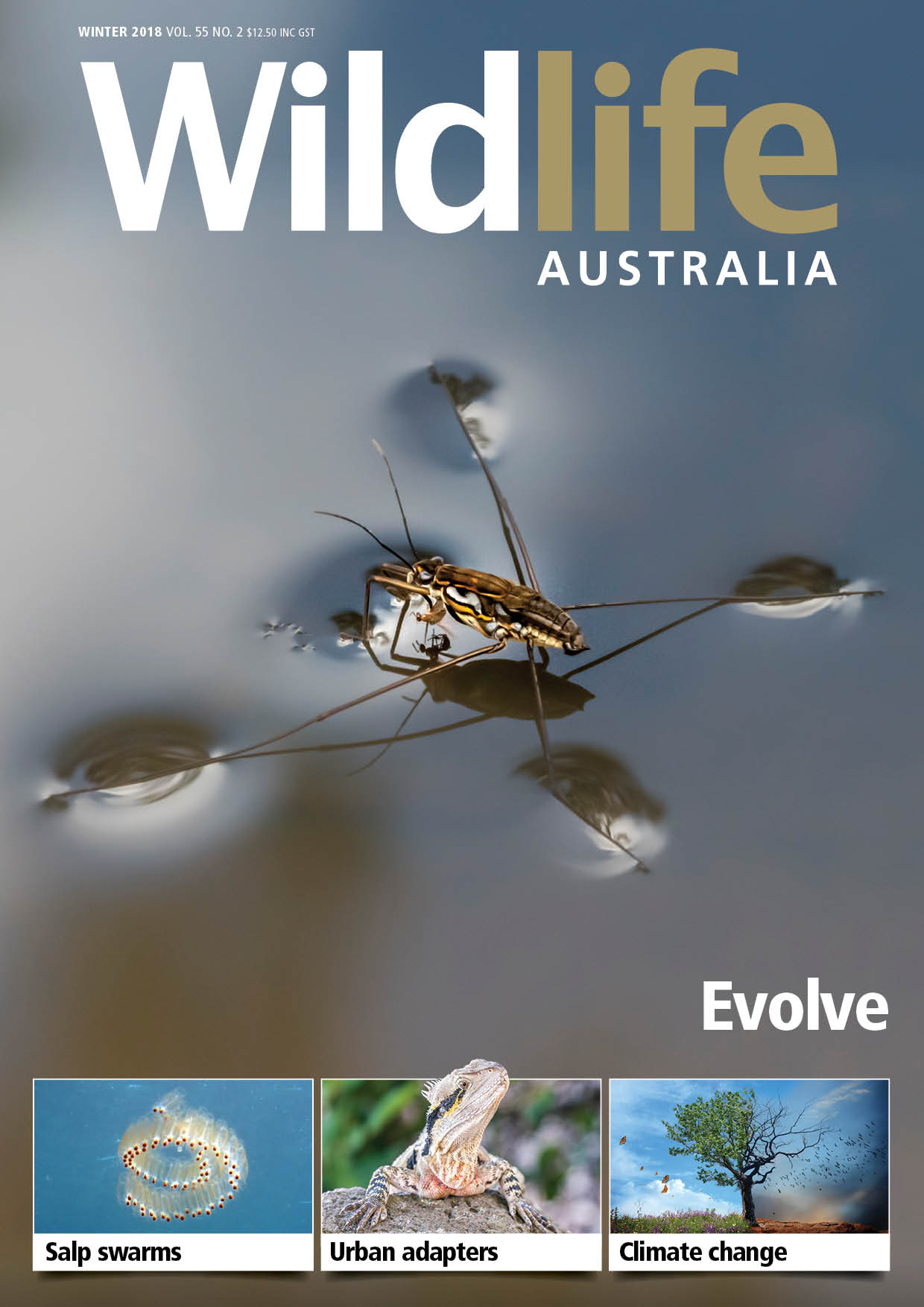
Winter 2018:
Evolve
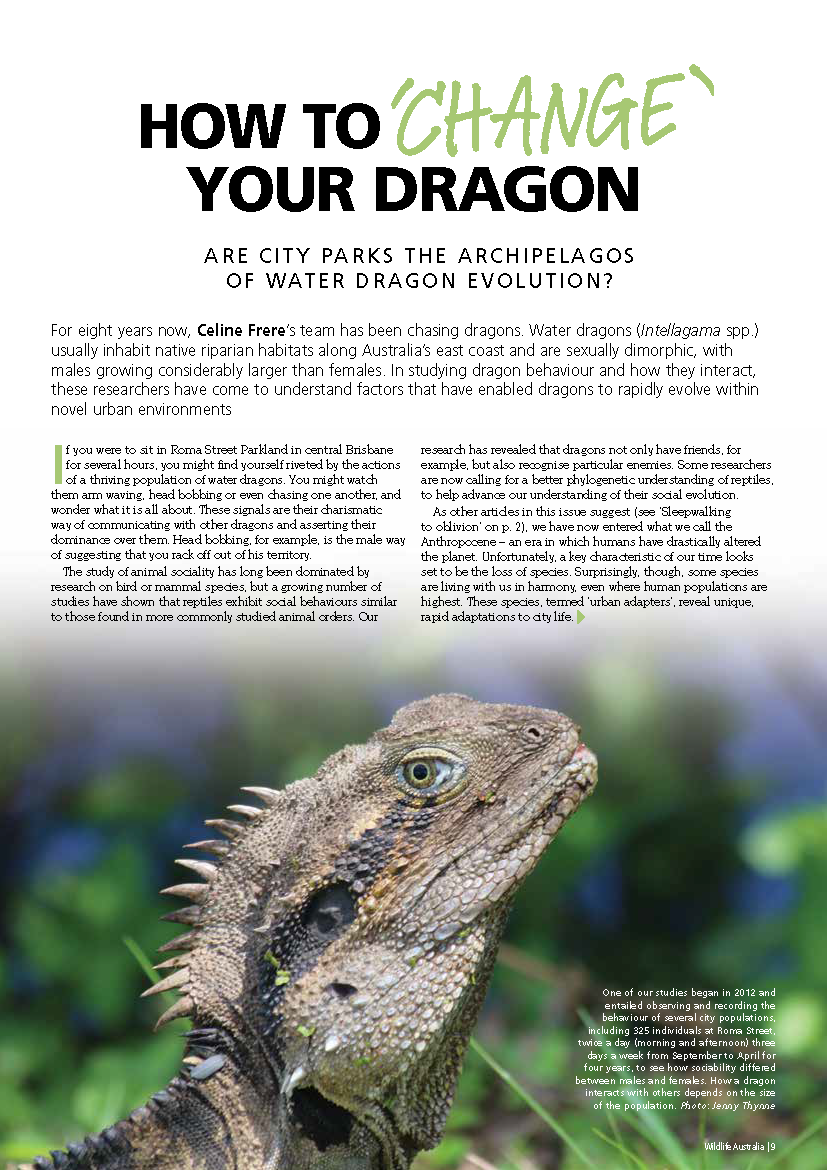
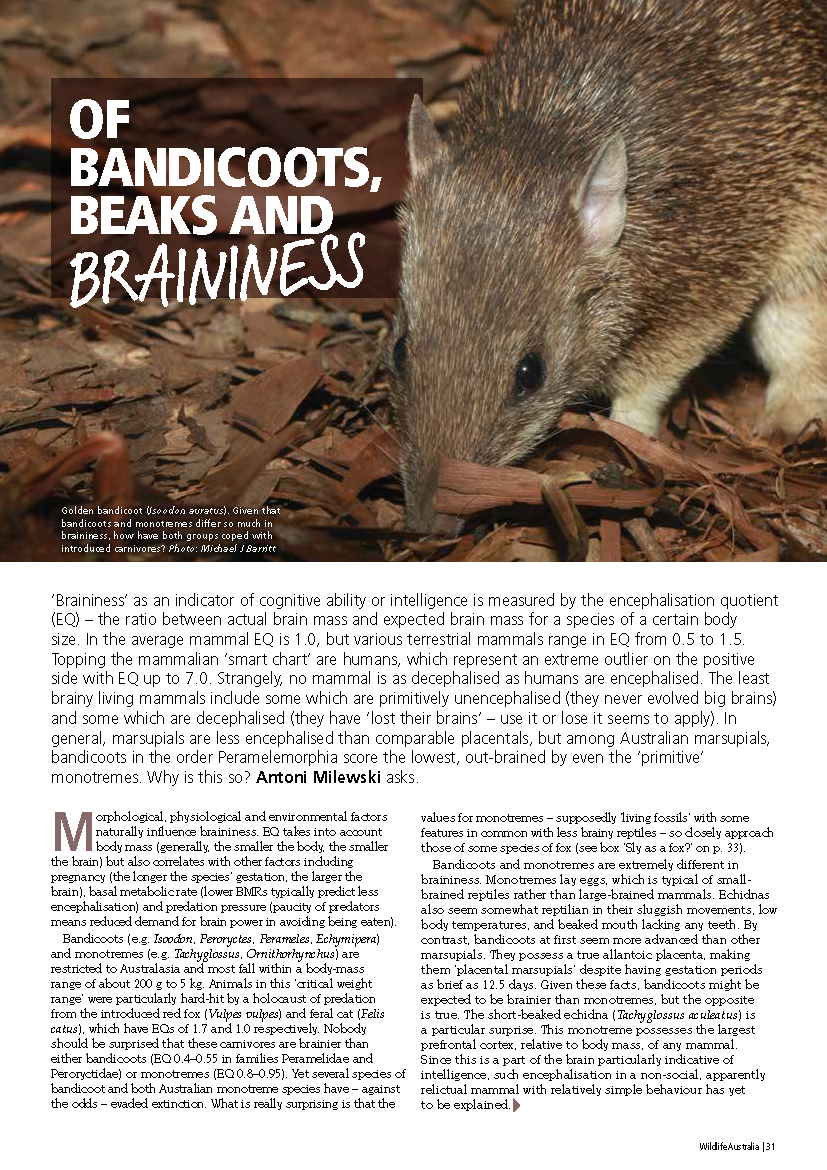
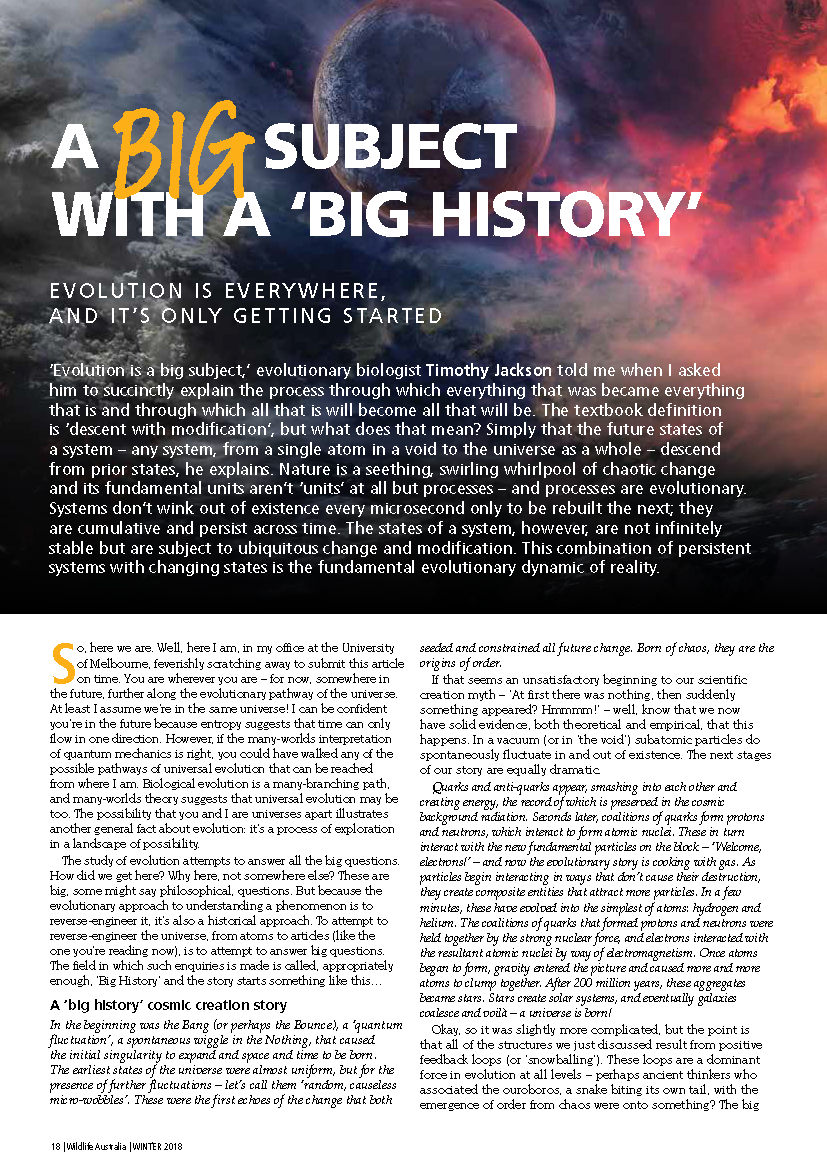
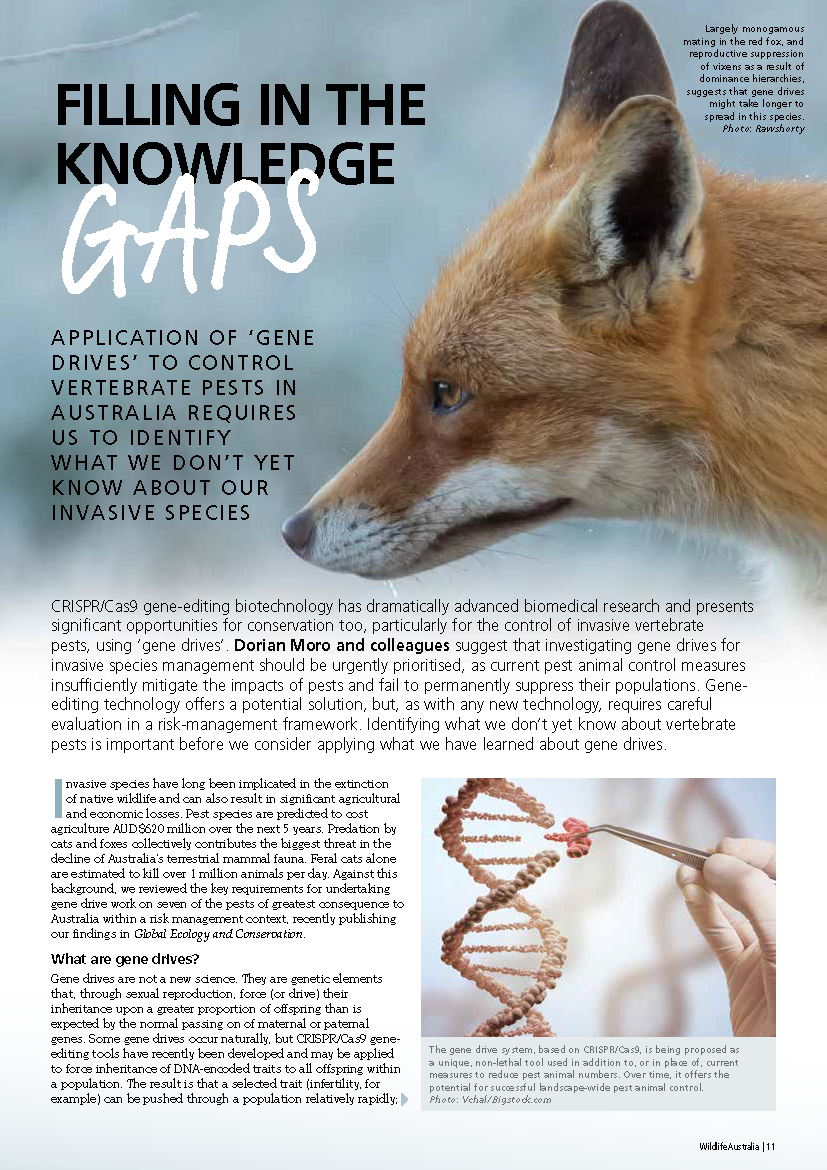
Things change – constantly. It’ s an obvious but powerful truth, and one that plays out in countless ways in the everyday lives of all of Earth’s inhabitants. Small changes may at first go unnoticed, but over time, cumulative change can result in something altogether different. Our cover image is of a water strider, an invertebrate that evolved to ‘walk on water’ and has long been considered a model subject for understanding evolutionary change and speciation. We, too, are constantly changing and adapting and, over time, evolving as a species – as Timothy Jackson explains in his article on the ubiquity of evolution on p. 18. Where will our evolution lead us, and where will it lead those with whom we share our planet?
In this issue...
- Are city parks the archipelagos of water dragon evolution? In studying dragon behaviour and how they interact, Celine Frere and her team have come to understand factors that have enabled dragons to rapidly evolve within novel urban environments.
- In general, marsupials are less encephalised than comparable placentals, but among Australian marsupials, bandicoots in the order Peramelemorphia score the lowest for ‘braininess’, out-brained by even the ‘primitive’ monotremes. Why is this so? Antoni Milewski asks.
- Evolution is everywhere and it’s only getting started. Nature is a seething, swirling whirlpool of chaotic change and its fundamental units aren’t ‘units’ at all but processes – and processes are evolutionary, explains evolutionary biologist Timothy Jackson.
- CRISPR/Cas9 gene-editing biotechnology has dramatically advanced biomedical research and presents significant opportunities for conservation too, particularly for using ‘gene drives’ to control invasive vertebrate pests, Dorian Moro and colleagues explain.
In this issue...
- Are city parks the archipelagos of water dragon evolution? In studying dragon behaviour and how they interact, Celine Frere and her team have come to understand factors that have enabled dragons to rapidly evolve within novel urban environments.
- In general, marsupials are less encephalised than comparable placentals, but among Australian marsupials, bandicoots in the order Peramelemorphia score the lowest for ‘braininess’, out-brained by even the ‘primitive’ monotremes. Why is this so? Antoni Milewski asks.
- Evolution is everywhere and it’s only getting started. Nature is a seething, swirling whirlpool of chaotic change and its fundamental units aren’t ‘units’ at all but processes – and processes are evolutionary, explains evolutionary biologist Timothy Jackson.
- CRISPR/Cas9 gene-editing biotechnology has dramatically advanced biomedical research and presents significant opportunities for conservation too, particularly for using ‘gene drives’ to control invasive vertebrate pests, Dorian Moro and colleagues explain.